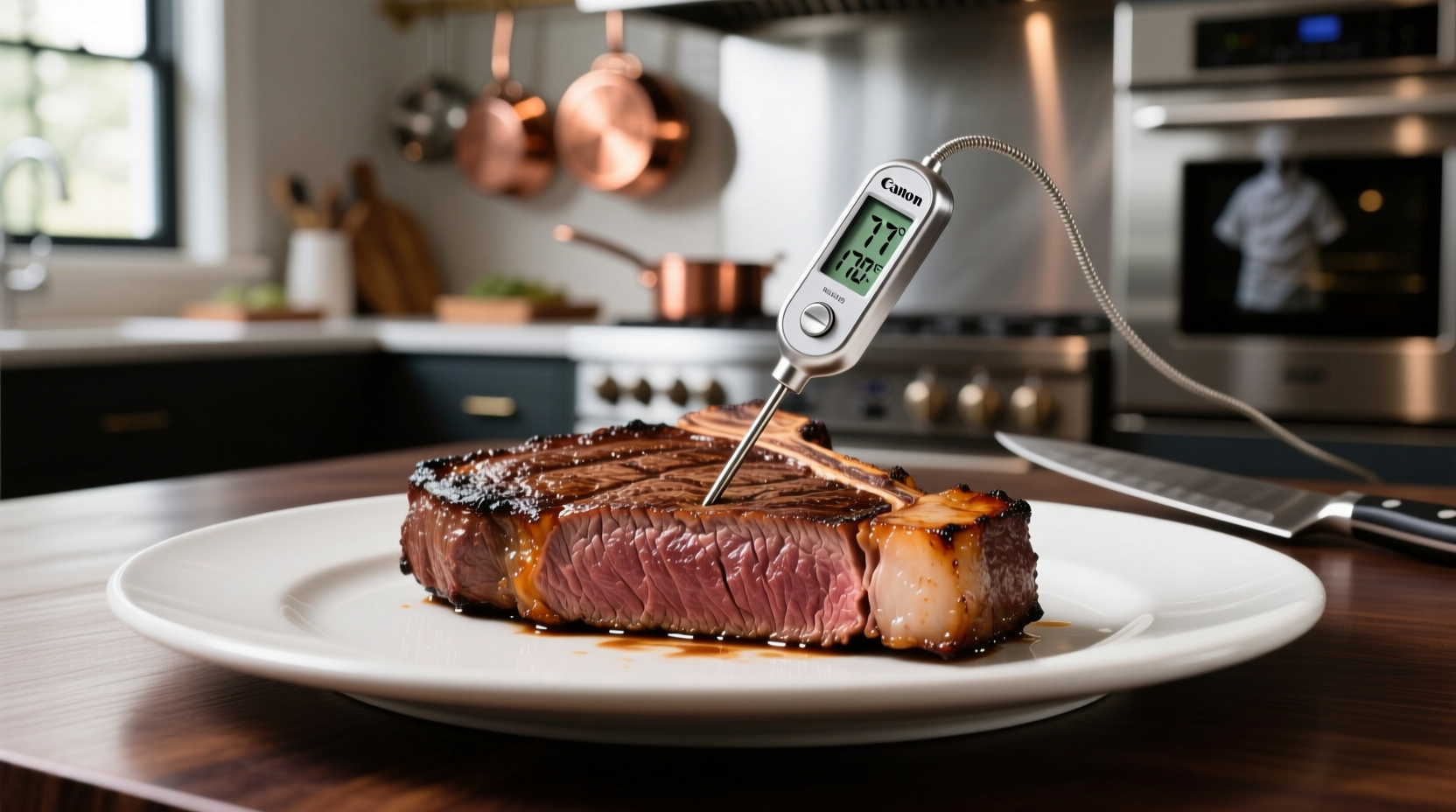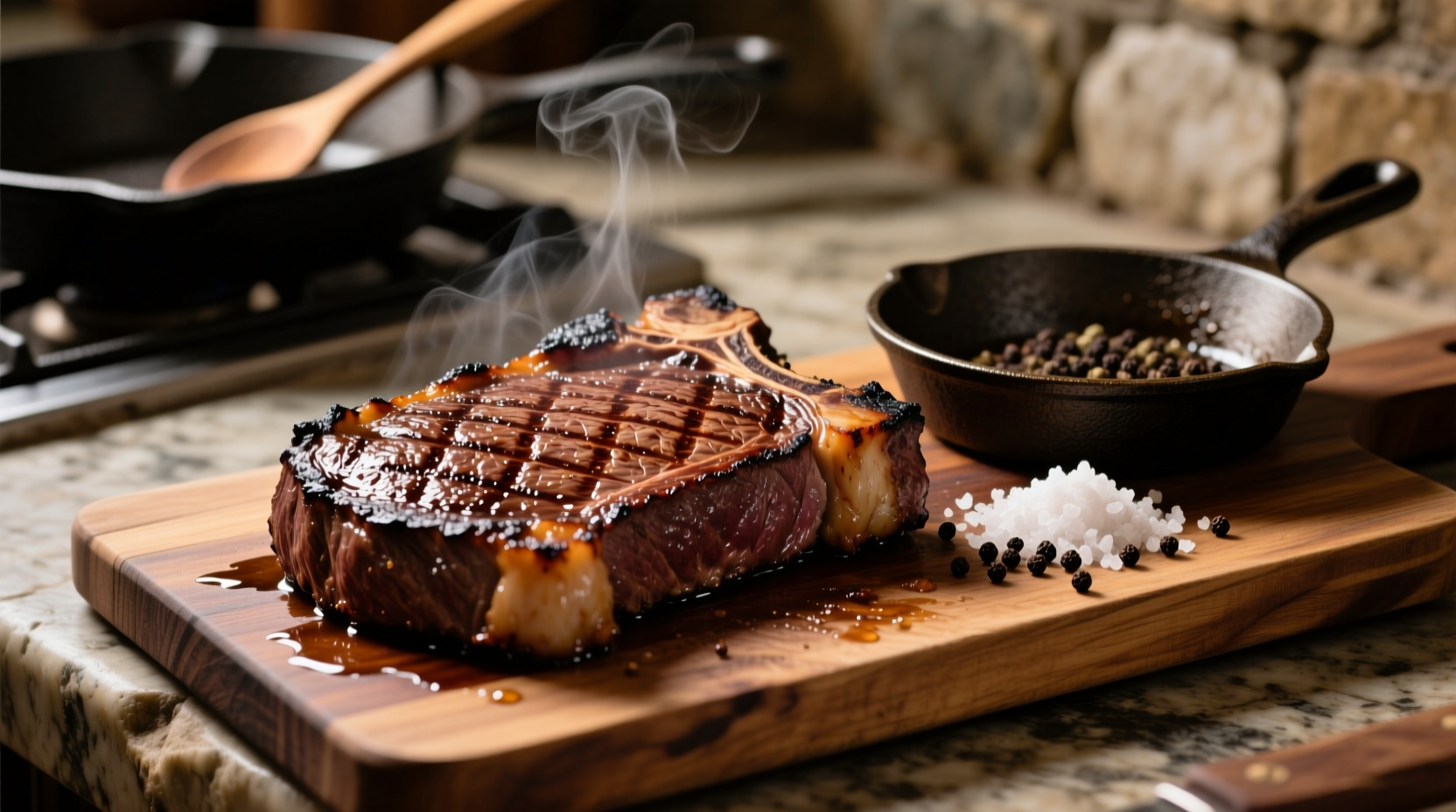The Truth About Well Done Steak: More Than Just Cooking It Longer
Many steak enthusiasts dismiss well done preparations, but millions prefer their steak fully cooked. The challenge? Creating a well done steak that's still tender and flavorful rather than dry and tough. With the right approach, you can transform this often-maligned preparation into a delicious meal that satisfies both taste and safety requirements.
Why Well Done Steak Gets a Bad Reputation (And How to Fix It)
The primary issue with well done steak is protein denaturation. As meat reaches temperatures above 150°F (66°C), muscle fibers contract significantly, squeezing out moisture. According to the USDA Food Safety and Inspection Service, well done steak should reach a minimum internal temperature of 160°F (71°C) for food safety.
| Cooking Stage | Internal Temperature | Texture Characteristics |
|---|---|---|
| Rare | 120-130°F (49-54°C) | Soft, cool red center |
| Medium Rare | 130-135°F (54-57°C) | Warm red center, most tender |
| Well Done | 160°F+ (71°C+) | Firm texture, minimal moisture |
Strategic Preparation: Setting Up for Success
Choosing the right cut makes all the difference. Thicker cuts (1.5 inches or more) with good marbling provide the moisture buffer needed for well done preparation. Ribeye, porterhouse, and filet mignon work best. Avoid lean cuts like sirloin for well done cooking.
Bring your steak to room temperature for 45-60 minutes before cooking. This ensures even cooking throughout. Season generously with coarse salt and freshly ground pepper at least 40 minutes before cooking to allow proper seasoning penetration.

Professional Cooking Techniques for Juicy Well Done Steak
The two-stage cooking method delivers the best results for well done steak:
Stage 1: Searing (5-7 minutes per side)
Heat a cast-iron skillet or grill to 450-500°F. Sear the steak until deeply browned, creating that essential flavor foundation through the Maillard reaction. This develops complex flavors that compensate for the longer cooking time.
Stage 2: Gentle Finishing (10-15 minutes)
Reduce heat to 300°F or transfer to a preheated 300°F oven. Continue cooking until the internal temperature reaches 155°F (68°C), then remove from heat. The temperature will continue rising to the target 160°F (71°C) during resting.
Use an instant-read thermometer for accuracy—never rely solely on timing. Insert horizontally into the thickest part of the steak, avoiding bone or fat.
Avoiding Common Well Done Steak Mistakes
Many home cooks make these critical errors when preparing well done steak:
- Pressing the steak—squeezes out precious juices
- Skipping the rest period—essential for moisture redistribution (minimum 10 minutes)
- Cooking straight from refrigerator—causes uneven cooking
- Using thin cuts—no margin for error with well done preparation
Context Matters: When Well Done Steak Makes Sense
Well done steak serves important purposes beyond personal preference. According to the USDA Food Safety guidelines, certain populations—including pregnant women, young children, older adults, and immunocompromised individuals—should consume beef cooked to at least 160°F for safety. In many cultures worldwide, well done preparation is the standard rather than the exception.
Rescuing Overcooked Steak: Last Resort Techniques
If your steak has gone beyond well done, try these professional recovery methods:
- Thinly slice against the grain to minimize toughness
- Soak in warm beef broth for 5-10 minutes to reintroduce moisture
- Top with compound butter or sauce to add richness
- Use in dishes like steak sandwiches where texture matters less
Serving Suggestions for Maximum Enjoyment
Complement your well done steak with these flavor-enhancing pairings:
- Rich sauces like béarnaise, mushroom, or red wine reduction
- Acidic elements (lemon wedges, chimichurri) to cut through richness
- Roasted root vegetables that stand up to robust flavors
- Full-bodied red wines like Cabernet Sauvignon
Final Temperature Check: The Critical Last Step
Always verify your steak's internal temperature in multiple spots before serving. Well done steak should register 160°F (71°C) or higher throughout. Remember that carryover cooking continues for several minutes after removal from heat, so pull your steak at 155°F (68°C) to reach the perfect well done temperature during resting.











 浙公网安备
33010002000092号
浙公网安备
33010002000092号 浙B2-20120091-4
浙B2-20120091-4